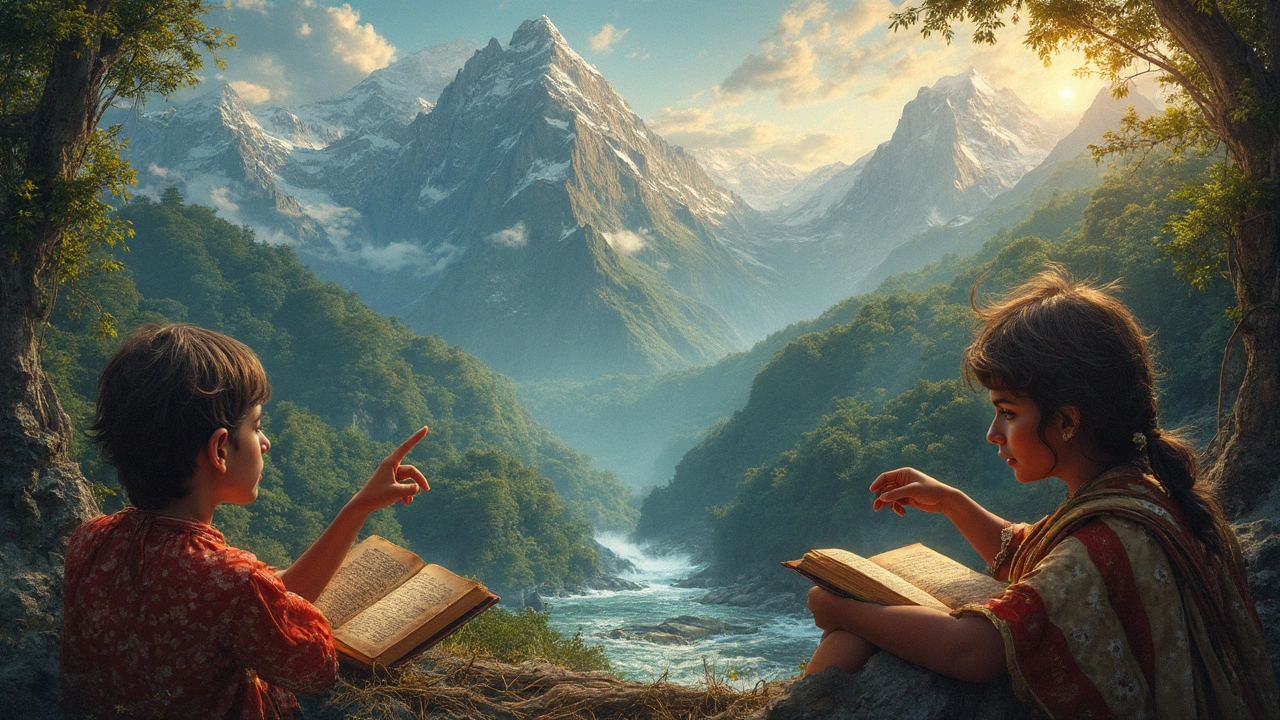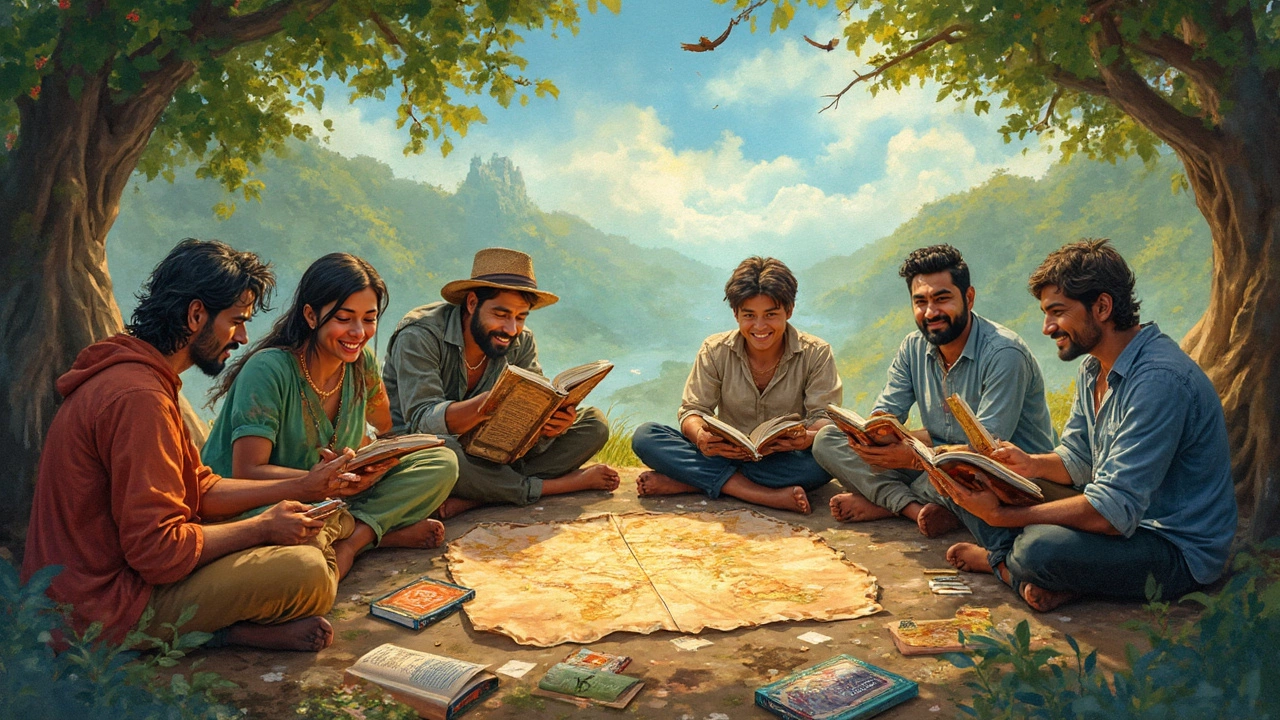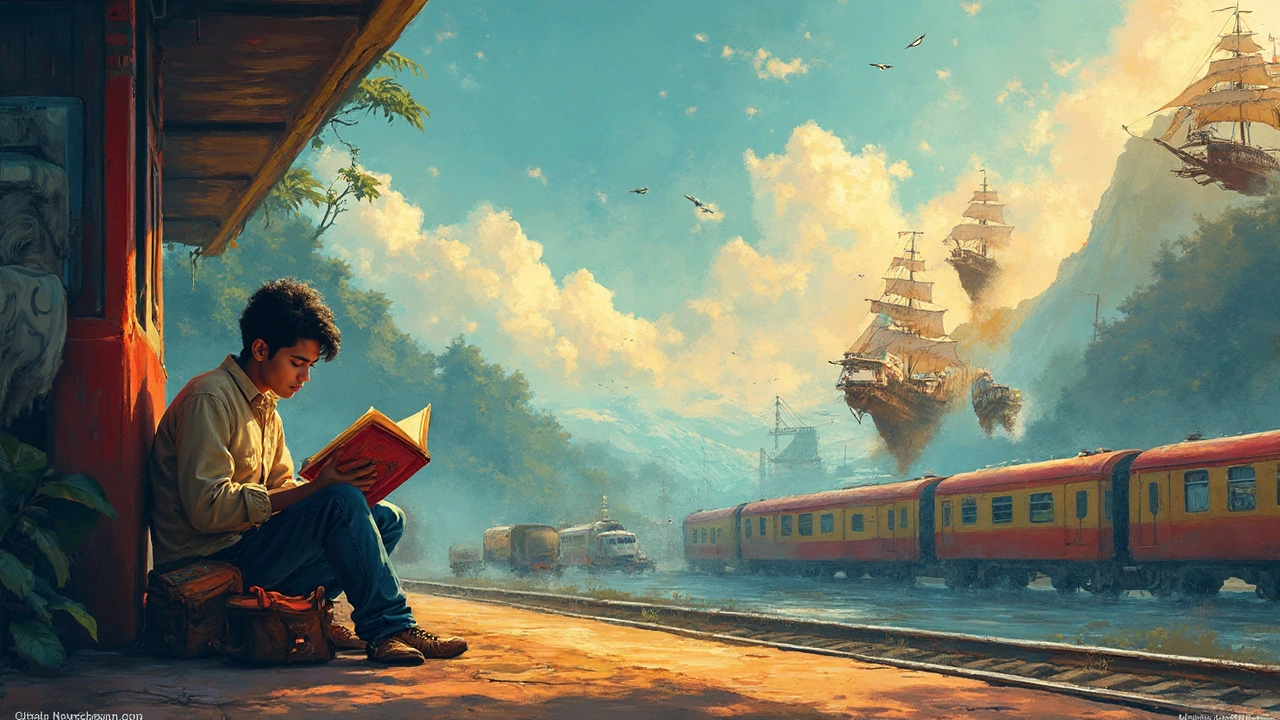
Few things beat the kick of getting lost in a killer adventure novel. One minute you’re stuck in rush hour, the next you’re dodging crocodiles in the Amazon, scaling a snowy mountain or chasing down a hidden treasure. But what actually sets top adventure stories apart from the rest? It’s not just about wild settings or nonstop action—it’s about characters you want to root for, moments where your heart races, and a plot that just won’t let go.
If you’re tired of the same old fiction, picking an adventure novel is an easy way to restart your reading habit. Some of these books have inspired real-life explorers, movie blockbusters, and even whole genres. Others are the kind you read as a kid and still remember every detail years later. The secret? They make you feel like you could be the one out there, going further, risking more, and coming home with an amazing story.
- What Makes an Adventure Novel Truly Great?
- Classic Adventure Novels You Can’t Miss
- Modern Gems: New Takes on Adventure
- Hidden Treasures: Underrated Adventure Reads
- Tips for Getting the Most Out of Adventure Stories
What Makes an Adventure Novel Truly Great?
A great adventure novel does more than just toss its characters into danger. It's all about the rush of the unknown, the feeling that you have no idea what's around the next bend, and the high-stakes choices that force characters to dig deep. But there are certain ingredients that nearly every unforgettable adventure story shares, no matter when or where it was written.
First, the setting has to pull you in. Think about the wildness of "The Lost World," the relentless sea in "Moby Dick," or the pulsing jungle in "The Jungle Book." Locations aren't just a backdrop—they put the challenge right in the hero's face and spark that itch to explore.
Next is the pacing. A good adventure story almost never lets you feel bored. Chapters end with a problem, a twist, or something you absolutely need to know about. Ever notice how "Treasure Island" never drags? That’s because Robert Louis Stevenson crammed every chapter with action and suspense. Modern bestsellers like "The Maze Runner" keep things rolling even faster, proving the old tricks still work.
- Adventure novels almost always center around a goal: a treasure, a rescue mission, maybe even survival. The journey matters as much as the destination.
- Real stakes: If you don’t care what happens, you won’t keep reading. Good authors make the danger feel real—whether it’s the threat of a monster, a storm, or a double-cross.
- Growth: The best protagonists are different by the end. Frodo (from "The Lord of the Rings") isn’t the same quiet hobbit after his ordeal—he’s changed forever. That’s the real magic.
Here's something interesting: A 2017 publishing survey found that over 50% of readers picking up their first book in a year chose something described as "adventure," showing just how much these stories grab attention, especially for those trying to get back into reading.
Last thing—these novels stick around for a reason. They fuel daydreams, spark new hobbies, and sometimes even inspire real treks and daring travels. Ask anyone who finished "Into the Wild" and then started planning their own road trip—these stories get you off the couch.
Classic Adventure Novels You Can’t Miss
There's a reason classic adventure novels never go out of style. These are the books that nailed the formula and inspired everything that came after. They’re fast-paced, packed with danger, and make you want to drop everything and head off on your own quest. Let’s get into the big hitters—the ones everyone should read at least once.
- Treasure Island by Robert Louis Stevenson (1883): The ultimate pirate story. This book pretty much put pirates, treasure maps, and one-legged captains on the map for pop culture. If you ever heard "X marks the spot," you have this book to thank.
- The Call of the Wild by Jack London (1903): Set during the Klondike Gold Rush, it follows Buck, a dog yanked from a cushy life and forced to survive in the wilds of Alaska. Fun fact: This book’s popularity triggered an avalanche of survival tales in early 20th-century magazines.
- The Three Musketeers by Alexandre Dumas (1844): Swords, secret plots, loyal friends—this one’s been turned into more than 200 films, TV shows, and cartoons. That’s staying power.
- Journey to the Center of the Earth by Jules Verne (1864): Science fiction meets classic adventure as a team literally heads underground, discovering ancient monsters and lost worlds. The book actually sparked a tourism wave in Iceland, where the story begins.
- Moby-Dick by Herman Melville (1851): Don't let the old-style language scare you off. This book’s ocean chase and obsession with the big white whale keep it right at the center of adventure reading. It flopped at release, but now it’s one of the most-studied American novels ever.
If you want a quick guide to which of these adventure novels suit your taste, check out the table below:
| Book | Setting | Theme |
|---|---|---|
| Treasure Island | Caribbean Islands | Pirates, treasure hunts |
| The Call of the Wild | Alaska, Yukon | Survival, nature |
| The Three Musketeers | France (1600s) | Brotherhood, duels |
| Journey to the Center of the Earth | Iceland, underground | Exploration, science |
| Moby-Dick | Pacific Ocean | Obsession, man vs. nature |
These classics pack a serious punch when it comes to adventure. Most are easy to find, and many are even free as e-books. If you’re only going to try one, pick the story that matches your favorite setting or mood.

Modern Gems: New Takes on Adventure
Adventure novels aren’t stuck in the past. The last couple of decades have brought a fresh spin, with smart twists on survival, global journeys, and wild discoveries. Writers today mix real science, tech, or even everyday struggles with pulse-pounding action, so you get stories that feel both epic and close to home.
Let’s check out a few standout adventure novels you shouldn’t miss:
- The Martian by Andy Weir: Proof that you don’t need a lost jungle to spark adventure. Trapped on Mars, Mark Watney doesn’t just fight against nature—he wrestles with isolation and science itself. NASA even used the book in training because of its real-world accuracy.
- The River by Peter Heller: Two friends go canoeing in Canada and get swept into a nightmare when a wildfire and human threats collide. If you thought outdoor mishaps were stressful, this story cranks up the tension with every page.
- Into the Silence by Wade Davis: Can a true story still be an adventure novel? This one’s about the first British attempts to climb Everest after World War I. It’s a wild blend of danger, tragedy, and drive—not just hiking up a hill, but surviving some of the toughest moments in history.
- The Ruins by Scott Smith: Ever wish you didn’t take that vacation? Four travelers face something much scarier than snakes in the Yucatán jungle. The gripping tension keeps you awake at night—and kind of makes you want to double-check your next travel plans.
Modern adventures stand out because they feel so relatable. Distance and danger aren’t always about jungles or pirates; sometimes it’s a survival story on another planet or a river trip gone wrong. Writers use more realistic settings, add social issues, and let characters mess up in believable ways, which makes the triumphs feel bigger.
Here’s a quick look at what these books have in common:
| Title | Main Setting | Style |
|---|---|---|
| The Martian | Mars | Tech-heavy, witty |
| The River | Canadian wilderness | Nature, suspense |
| Into the Silence | Himalayas | Historical, real-life |
| The Ruins | Mexican jungle | Psychological, intense |
If you want an adventure that keeps things fresh, start with these. They do more than entertain—they put you right in the middle of chaos, whether that’s outer space, a deadly river, or a mountain no one’s ever climbed.
Hidden Treasures: Underrated Adventure Reads
Some adventure novels just slip under the radar, but they’re every bit as gripping as the big names. If you feel like you’ve read all the adventure novels people talk about, it’s time to try something less expected. These books didn’t always hit the bestseller lists, but ask devoted readers and you’ll find a cult following behind each title.
The Lost City of Z by David Grann is a gem if you love stories that blend real history with edge-of-your-seat action. It follows the relentless British explorer Percy Fawcett, who vanished in the Amazon in the 1920s while searching for an ancient city. What’s wild is, even today, people still debate what happened to him. The book reads like fiction, but it’s all true.
Don’t ignore Savage Summit by Jennifer Jordan. This one tells the stories of the first five women who climbed K2—arguably a nastier climb than Everest. You get raw survival, tough decisions, and crazy highs and lows. Less flashy than Everest tales, but far more honest about what adventure really looks like at the razor’s edge.
If you like desert settings and big risks, The Sheltering Sky by Paul Bowles has a vibe all its own. A post-WWII novel, it’s about Americans drifting through North Africa, lost both physically and emotionally. The book isn’t non-stop action, but what it lacks in car chases it makes up for in atmosphere and the kind of danger that just creeps up on you.
And not enough people have read The White Darkness by David Grann. This tells the real-life story of Henry Worsley, a British Army officer who tried to cross Antarctica alone. It’s cold, harsh, and full of that quiet kind of suspense—can he really make it, or is the place going to win?
Looking for something from a totally different corner of the globe? Try The Dog Stars by Peter Heller. Yes, it’s post-apocalyptic, but at its heart, it’s a classic adventure survival story. A man and his dog try to stay alive out west after a pandemic wipes out most of humanity. It’s about risk, isolation, and searching for hope in places where nobody should survive. Not exactly sunshine, but brutally honest about what adventure can mean when society falls apart.
If you’re up for something new, try grabbing a couple of these the next time you hit the library or want to shake up your reading list. You’ll get adventure, but also a side of grit and reality the usual picks sometimes miss.

Tips for Getting the Most Out of Adventure Stories
Reading adventure novels isn’t just about turning pages. If you want to really feel the thrill and get more out of every story, it pays to read with a plan. Here are some practical ways to level up your adventure reading experience:
- Choose the right setting. Find a place without distractions—no endless alerts, no noisy TVs. Even if you’re reading on the bus, noise-canceling headphones and a playlist can help you focus.
- Go for variety. Don’t just stick with pirates or Amazon jungles. Try classics like "The Call of the Wild," which deals with survival and wild nature, and mix in modern adventure tales like Andy Weir’s "The Martian" for a sci-fi edge. This will keep things interesting.
- Read before bed or during downtime. Studies show people who read fiction regularly (even just 15 minutes before sleep) feel more relaxed and report higher empathy—they actually step into the shoes of the characters.
- Highlight great lines or moments. If a character makes a risky move or the plot takes a wild turn, mark that page. You’ll want to come back to those moments later—sometimes they’re just cool, sometimes they’re the key to the whole story.
- Chat about what you read. Whether it’s a book club or a friend, talking about twists or characters adds so much more fun. You might even get new recommendations this way.
If you're serious about getting the most punch out of your adventure novels, even just keeping a simple journal or list of what you’ve read can be motivating. Plus, looking back at all those crazy stories you’ve explored is a cool way to see how your reading tastes have changed. Maybe you started with lost islands, but now you’re deep into dystopian quests—either way, the adventure never really stops.


